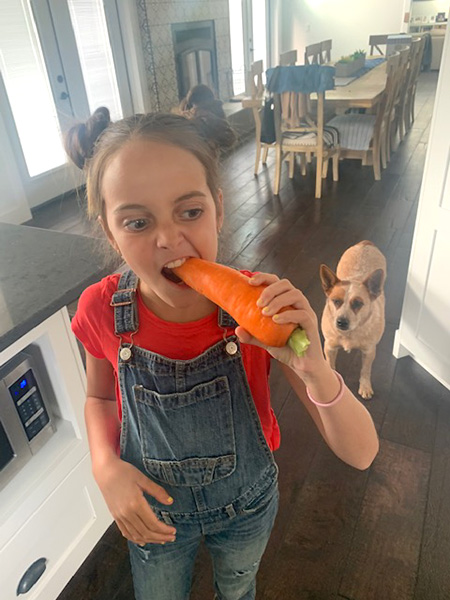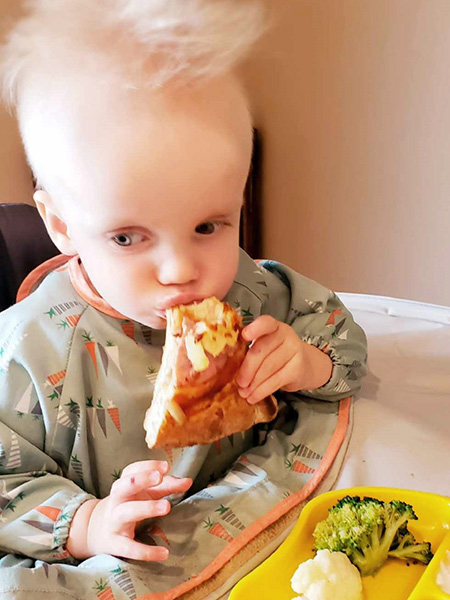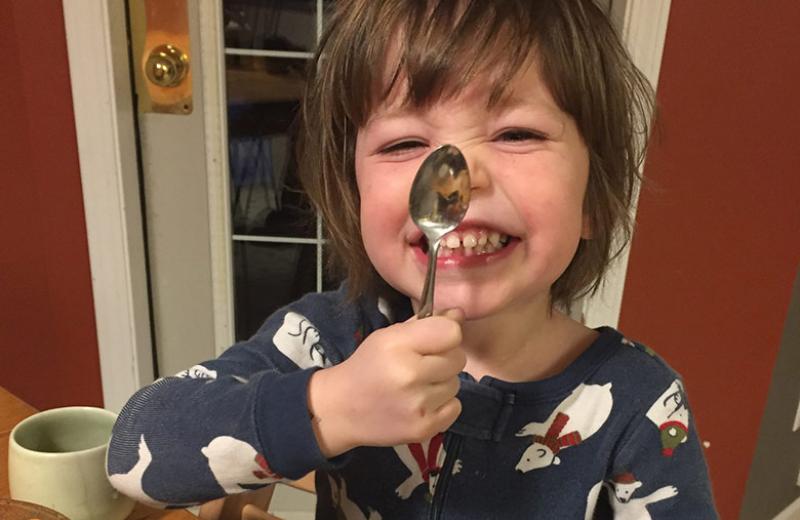Ellyn Satter’s division of responsibility in feeding (sDOR) is a best-practice approach that helps to prevent and manage common childhood feeding problems. It’s based on the understanding that, within the structure of regular meals and snacks, children have the ability to eat the amounts they need to grow well and be well. We introduced sDOR in a previous post: A sigh of relief: Trusting kids to eat enough.
At first glance, sDOR sounds so simple. Adults’ roles are to decide what food to offer, and when and where to offer it. Kids’ roles are to decide whether and how much to eat from the foods provided. However, using this approach involves some learning! I reached out to dietitian colleagues and asked them to share how they learned to trust their children with eating through sDOR. Their insights are so helpful!
Keeping a regular meal and snack routine
“To trust my toddler to eat as much as she needs, I have to do my part in keeping a good meal and snack routine. When I am not so good at hitting snack times, she is hungry, upset, won’t eat, and just cries until I nurse her. It has also been helpful to remember that, while she might not eat a lot in one sitting, she gets a variety over the course of a few days.”
- Anna Kandola, Mackenzie
Being considerate without catering
“It’s challenging when my little one chooses not to eat anything at all at a meal or snack, or when he refuses an item he previously enjoyed. It’s tempting to go to the fridge and cupboard to offer all kinds of things to try to get him to eat. I have learned to stick to the foods I have offered and to not cater to him – this is still hard! I also make a point of always offering a few familiar foods at a meal time, especially when there are new foods.” - Darcie Bergeron, Prince George

It takes time and patience
“What has helped me the most is seeing how she oh-so-gradually (like painfully gradually) has started to increase the types of foods she eats when she dishes up herself. I knew it could take a LONG time for kids to become more adventurous eaters. In my mind one year was a long time – not nine years! I wish someone could have told me how long.”
- Carmen Maddigan, Fort St. John
Ensuring all caregivers are on board
“The sDOR made sense to me. My husband was on board, too (although he at first believed in the “one bite rule,” but then realized this was not necessary). All care providers need to follow the same feeding philosophy for this to work. In our house, meal times are pleasant; there are no arguments about what the kids have or have not eaten.”
- Christine Geier, Terrace
Responding to criticism
“Some relatives have been critical of our approach. Being a dietitian has helped me to be more comfortable standing my ground on how we choose to feed our daughter. I respectfully remind them that she is capable of letting us know when she has had enough to eat. That can vary drastically from meal to meal, and from day to day.”
- Lindsay Vandermeer, Prince George

Dealing with our own anxieties
“For me, trusting my child to know how much to eat has been directly related to my own anxieties. Instead of fostering trust, anxiety changes the situation to one of trying to control my child’s eating, and this in turn sows seeds of anxiety in her. I am learning to recognize my anxiety, deal with it, and trust that my daughter will find her way. It takes time. I have to forgive myself – I am also a work in progress!”
- Judy April, Dawson Creek
Take-aways
Thank you to these dietitians for sharing their stories about feeding their children! They emphasized focusing on our roles with feeding and trusting kids to do their parts with eating. It takes courage, especially in the face of criticism from others. We also see the value of be consistent, of time and patience, and of dealing with our own anxieties around feeding.
Learn more about Ellyn Satter’s division of responsibility in feeding:
- Ellyn Satter Institute website
- Northern Health pamphlets:
- Northern Health webpages: Nutrition for Toddlers and Preschoolers and for Children and Youth














Comments